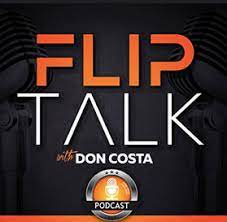|
Check out our new audio content!
Getting your Trinity Audio player ready...
|
Image from Pixabay
By Rick Tobin
California’s nickname is the “Golden State” for many reasons as it relates to the gold discovered at Sutter’s Mill by James Marshall near the city of Coloma in 1848, skyrocketing real estate prices, a Top 5 global economy ranking, and consistent warm sunshine. Of all of the assets ever discovered in California’s history since it joined the union as the 31st state in 1850, land that is buildable has been proven to be the most valuable asset of them all.

Image from Pixabay
By the end of December in 2020 during a global pandemic designation, the median price of a California home was published by the California Association of Realtors (CAR) as being a shocking $717,930 value. In January 2021, CAR reported that statewide median home prices rose +21.7% year-over-year.
Statewide home prices surpassed $700,000 in August 2020 for the first time ever. For example, a 21.7% price gain for a $700,000 home would be equivalent to a staggeringly high $151,900 equity gain in just 12 months.
For more expensive coastal homes that are valued near $2 to $5 million, a 21.7% year-over-year price gain would be be as follows:
● $2,000,000 home value = +$434,000 annual price gain
● $3,000,000 home value = +$651,000 annual price gain
● $4,000,000 home value = +$868,000 annual price gain
● $5,000,000 home value = +$1,085,000 annual price gain
The Priciest California Counties by Region
Let’s take a look below at recent county price trends for California to better understand how high median home prices have risen so high. For January 2021, the California Association of Realtors (CAR) reported the following most expensive median prices for these Southern California regions:
Southern California Counties
#1 Orange: $971,000
#2 Ventura: $776,000
#3 San Diego: $730,000
#4 Los Angeles: $697,660
#5 Riverside: $495,500
#6 San Bernardino: $390,000
Central Coast Counties
#1 Santa Cruz: $1,100,000
#2 Santa Barbara: $920,000
#3 Monterey: $860,000
#4 San Luis Obispo: $698,000
Bay Area Counties
#1 San Francisco: $1,745,000
#2 San Mateo: $1,605,000
#3 Santa Clara: $1,375,000
#4 Marin: $1,350,000
#5 Alameda: $1,060,000
#6 Napa: $835,000
#7 Contra Costa: $765,000
#8 Sonoma: $715,000
#9 Solano: $510,000
https://www.car.org/en/marketdata/data/countysalesactivity

Image from Pixabay
California’s Top 5 Global Economy
By 2018, California had surpassed the United Kingdom as the 5th largest economy in the world if it were listed as a separate nation. The fact that London, and the rest of the United Kingdom, is one of the most powerful, wealthiest, and historic regions in world history and is behind the Golden State in terms of economic size is quite impressive.
Listed below are the Top 10 largest world economies:
1. United States $19.391 trillion
2. China $12.015 trillion
3. Japan $4.872 trillion
4. Germany $3.685 trillion
5. California $2.747 trillion
6. United Kingdom $2.625 trillion
7. India $2.611 trillion
8. France $2.584 trillion
9. Brazil $2.055 trillion
10. Italy $1.938 trillion
Source: International Monetary Fund (2018 data)
In 2019, it was reported that California was closer to $3.2 trillion in annual economic output. Because California has such a diverse employment market that ranges from entertainment in Hollywood to multi-billion and trillion dollar digital media and marketing companies in Silicon Valley like Apple, Alphabet (parent of Google), and Facebook, the future continues to look bright for the Golden State’s economy.
California’s Population Base and Finite Land Supply

Image from Pixabay
There are approximately 40 million residents in the Golden State. As of January 2020, the US Census Bureau reported that the US had a population base of 330 million. This translates to California residents representing 12.12% of all US residents.
The famous film and stage actor, writer, and witty humorist from Pacific Palisades, California named Will Rogers once said: “Buy land. They ain’t making any more of the stuff.”
Another historic quote by Harold Samuel, the founder of Land Securities which was one of the United Kingdom’s most successful property companies, about the key to success in regard to how to make money in real estate is as follows: “Location, location, location.”
California is filled with an abundant supply of land that is adjacent to the majestic Pacific Ocean and includes scenic rivers, mountain ranges, and forests up and down the state which borders Mexico, Nevada, Arizona, and Oregon. Our state is 1,040 miles in length and 560 miles in width. There are an estimated 156,000 square miles of land and an additional 7,734 square miles that are covered by water for a grand total size of 164,000 square miles.
If you flew on an airplane between two airports in the state that didn’t fly over the Pacific Ocean, you’d probably see primarily empty land regions. Did you know that our 40 million residents live on approximately just 5.4% of the state’s entire available land supply?

Image from Pixabay
Almost 95% of California has no people living on it due to very strict zoning and usage laws and incredibly high building costs like environmental-impact study and “sustainable living” or green home building fees. Lumber prices have reached all-time record highs in early 2021 after topping $1,000 per 1,000 board feet for the first time ever. The combination of costly environmental-impact fees and rising lumber supply costs are two of the main reasons why there haven’t been many affordable homes or apartments developed in the state.
If we divide 156,000 square miles of available California land supply by the estimated 5.4% of land that’s allowed to have residents living there, this means that only 8,424 square miles of California has residential or commercial real estate and residents on it. If so, this is equal to 4,748 California residents per square mile of the buildable land supply.
Let’s put this 8,424 square miles of buildable land in the Golden State into better perspective by comparing it to other US regions:
● All of the Hawaiian Islands combined: 6,422 square miles
● The Big Island of Hawaii by itself: 4,028 square miles
● The state of Connecticut: 5,543 square miles
● Puerto Rico: 3,515 square miles
Money Supply + Land = Golden Returns
Most California residents created the bulk of their family’s overall net worth from the acquisition of residential property, both owner-occupied and investment. Few places in world history have experienced real estate booms like California as seen in recent years especially.
Most California homebuyers or investors need third-party money sources to get into and out of a property. This is because generally there are more buyers who need mortgages to purchase a property than there are all-cash buyers. Conversely, the same homebuyer is likely to later become a home seller who needs a qualified new homebuyer who has access to his or her money sources to close the sales transaction.
As California home prices skyrocket, the loan limits for conforming, FHA, VA, non-QM, and other types of creative money sources from places like hedge funds, insurance companies, and banks rise as well. For example, the high-cost conforming loan limits for the more pricey California counties were increased to $822,375 (97% loan-to-value). Or, a home, condominium, or townhome may be purchased with as little as 3% down payments up to almost an $850,000 purchase price.

Image from Pixabay
More flexible FHA loan products which allow lower credit scores and cash reserve allowances may require 3.5% down payments up to the similar $822,375 loan amount. Quite surprisingly, VA loans for qualifying active military or veterans have the option to purchase a single unit property (home, condominium, townhome) up to as high as $1.5 million with no money down and with 100% loan-to-value financing.
After June 2020, both Fannie Mae and Freddie Mac began really tightening up their underwriting requirements for self-employed borrowers partly due to serious concerns about rising unemployment rates and collapsing small to midsize businesses. Fannie and Freddie are the two largest secondary market investors in America that purchase a high percentage of 30-year fixed mortgage loans and other loan products.
The Jumbo mortgage market also started to freeze up after an increasing number of lenders stopped lending on larger mortgage amounts for owner-occupied, second home, and rental properties for one-to-four units. As a result, it forced more self-employed and high net worth borrowers to seek out non-conventional mortgage alternatives with funding sources from mortgage companies like mine who are partnered with more flexible hedge funds at prices that are very competitive with other loan products with or without income verification up to several million dollar loan amounts.
There’s a finite supply of both prime buildable California land and access to affordable and flexible money to purchase and sell these same property assets. As the number of buyers for California properties continues to far exceed the diminished available listing supply, you should better understand why homes have increased 10%, 20%, 30%, and 40%+ annually in various statewide regions. If you have access to land and money, then you’re well on your way to prospering here in the Golden State just like how the early Gold Rush settlers panned for gold.

Rick Tobin
Rick Tobin has a diversified background in both the real estate and securities fields for the past 30+ years. He has held seven (7) different real estate and securities brokerage licenses to date, and is a graduate of the University of Southern California. Rick has an extensive background in the financing of residential and commercial properties around the U.S with debt, equity, and mezzanine money. His funding sources have included banks, life insurance companies, REITs (Real Estate Investment Trusts), equity funds, and foreign money sources. You can visit Rick Tobin at RealLoans.com for more details.


















